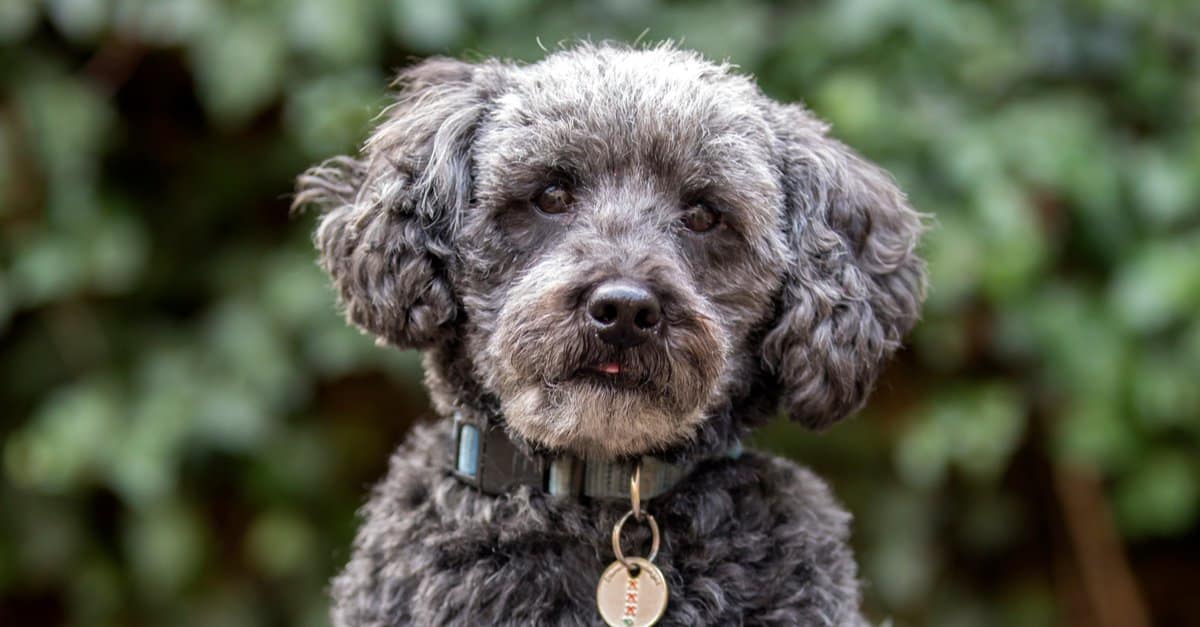A mix of a schnauzer and a poodle, a schnoodle is an adorable dog that is great for families, those with allergies, and people who love to play with dogs. Like their parent breeds, schnoodles like to be active and need plenty of exercise. Because their parents come in toy and standard sizes, you can also find a schnoodle that is just the right size for your home and lifestyle. The breed was developed to be low-shed and family-friendly. With an energetic and friendly nature, these adorable dogs make wonderful pets.
Schnoodle Summary
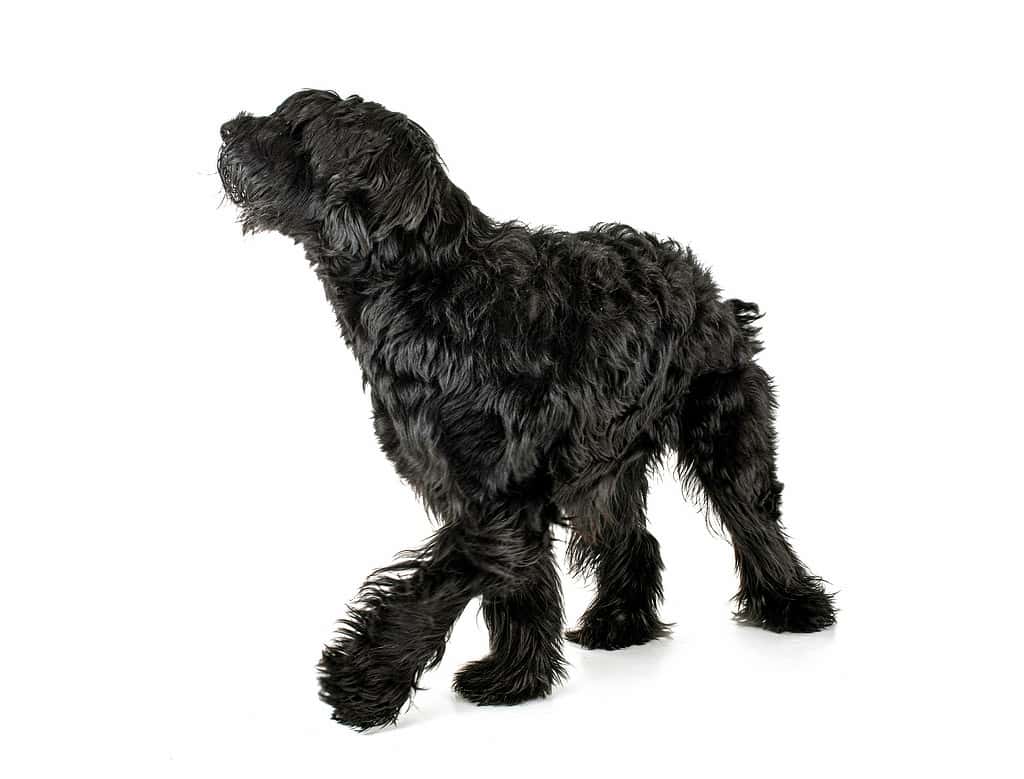
Giant schnoodles are quite tall and usually stand around 28 inches at the shoulder.
©cynoclub/ via Getty Images
In the 1980s, dog owners started to look at poodles and breed them with other dogs to bring out the features that they liked most. One of the mixed-breed dogs that developed during this time was the schnoodle, a cross between a schnauzer and a poodle. Poodles are hypoallergenic and don’t shed, which makes them highly desirable dogs to breed with others. Schnauzers are very smart and have expressive faces, which owners like. Schnoodles often get the best of both breeds and have a distinct curly coat with a one-of-a-kind face.
Schnoodles tend to have curly, fluffy coats like their poodle ancestors. This is typical for many poodle mixes. But schnoodles have the same eyebrows as the schnauzers in their lineage. They have the face of a schnauzer with the body of a poodle. Talk about cute! One interesting thing about schnoodles is that they do not have schnoodle parents. Instead, they are bred directly from a poodle and a schnauzer. This means that each dog can exhibit more poodle-like characteristics or more schnauzer-like features. You can get a good idea of what to expect, especially when it comes to size, from looking at their parents. But it’s always a bit of a toss-up which parent they will take after more and you may not know until they are fully grown.
Schnoodle Growth and Weight Chart
Male schnoodles tend to be bigger than females, although individual dog sizes can vary. The type of schnauzer and poodle that make the schnoodle is one of the biggest factors for your schnoodle’s size. Schnoodles are a first-generation mixed breed. This means that their parents are a poodle and a schnauzer, not two schnoodles. The exact way that the genes and characteristics from each parent can appear in their offspring can vary. But the type of poodle and type of schnauzer is the biggest predictor of their schnoodle pup’s size as an adult.
| Type | Parents’ Breeds | Adult Weight |
|---|---|---|
| Toy | Toy poodle and Mini Schnauzer | 4-10 pounds |
| Mini | Mini poodle and Mini Schnauzer | 10-20 pounds |
| Standard | Standard poodle and Standard Schnauzer | 20-60 pounds |
| Giant | Standard poodle and Giant Schnauzer | 60-110 pounds |
When Will My Schnoodle Stop Growing?
Your schnoodle might stop growing around 12 months. But if you have a larger schnoodle, bred from a standard poodle and a giant schnauzer, your dog might continue growing up until its second birthday. A lot of it depends on what type of poodle parent your schnoodle has. If one of their parents is a toy poodle or mini poodle, they tend to stop growing earlier and remain smaller. Schnoodles bred from standard poodles, the largest of the poodles, will continue to grow up to age two.
How Big Will My Schnoodle Be When It’s Fully Grown?
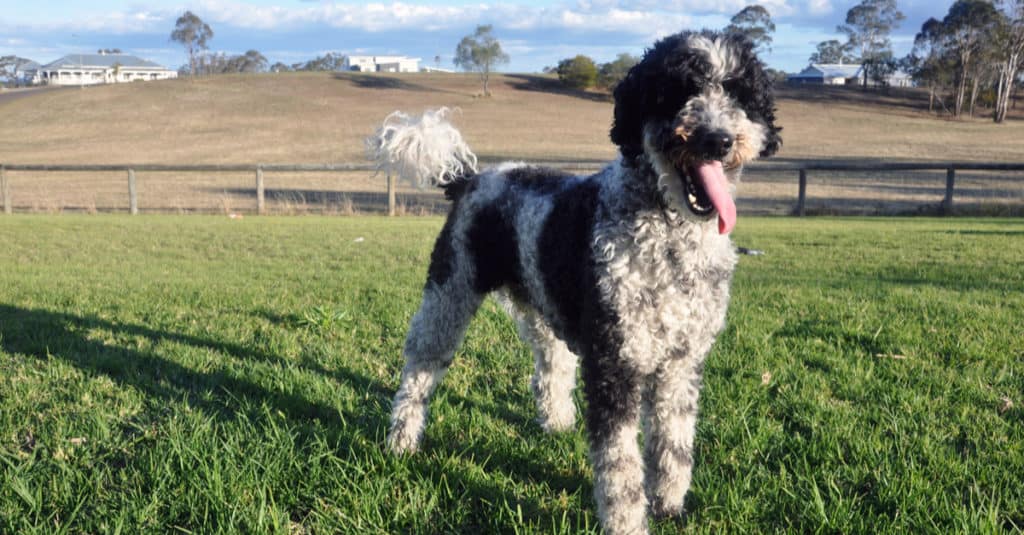
Schnoodles are very friendly and can be a good companion for a child.
©Nicole Klein/Shutterstock.com
This variability shows up in the overall size (measured in weight and height) of a fully grown adult Schnoodle. Those bred from toy poodles often get up to 10 or 12 pounds at most. Schnoodles with a mini poodle parent can get a pound or two heavier but typically stop growing around 13 or 14 pounds. At most, they’ll reach 20 pounds.
When one of the parents is a standard poodle, the size of the schnoodle jumps up. Those bred from standard poodles can be much larger, getting up to 75 pounds. When you breed a standard poodle with a giant schnauzer, you get a colossal giant schnoodle! These dogs get up to 110 pounds. This is why it is critical to know the exact lineage of your new pup. After all, caring for a 10-pound dog is much different than adding a 110-pound dog to your family.
The Biggest Schnoodle Ever Recorded
Giant schnoodles are the largest type of schnoodle. They are a cross between a giant schnauzer and a standard poodle. Giant schnoodles can weigh up to 110 pounds. Females tend to be a little bit smaller, usually closer to 75 pounds. They are around 26 to 28 inches tall at the shoulder.
When Should My Schnoodle Be Spayed or Neutered?
The best time to spay or neuter your new dog depends on their size, as well as other health factors. Toy and mini schnoodles can be neutered a bit earlier, often between 6 and 9 months old. Larger dogs, such as standard Schnoodles and giant schnoodles, benefit from waiting a little bit longer to go through the procedure. The American Kennel Club recommends waiting until at least 12 months old and maybe even up to 18 months old to spay or neuter a larger breed. Of course, your local veterinarian can make the best recommendations based on your dog’s size and any other health issues that might come up.
When Should My Schnoodle Be House Broken?
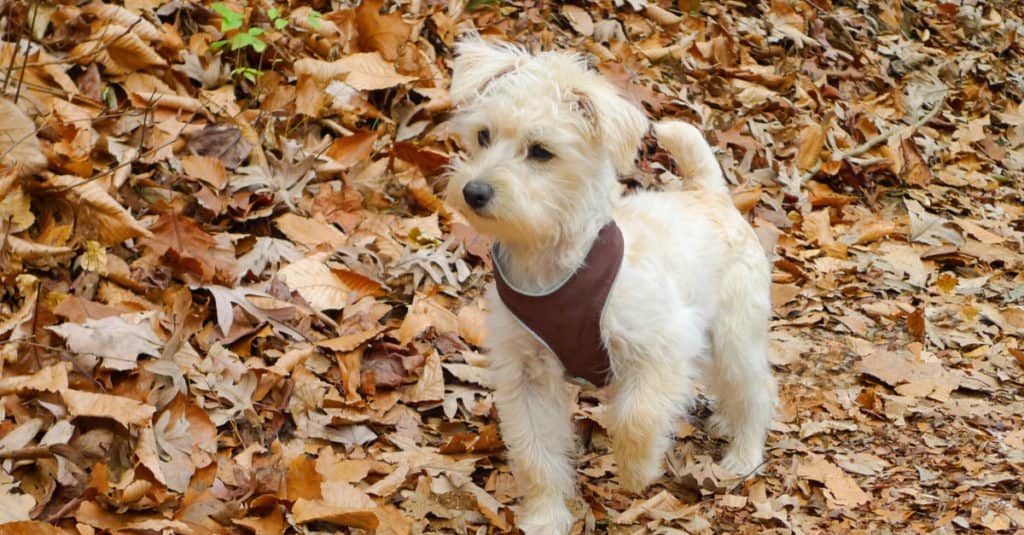
Schnoodles don’t shed very much and can be a good choice for individuals with allergies.
©Rena Schild/Shutterstock.com
6 months is the most common housetraining success milestone. Some dogs train faster and will master going to the bathroom outside by 4 months. Some dogs take longer, up to 1 year. Schnoodles are very smart and trainable, so they tend to be on the earlier side of training milestones. You can also expect fewer accidents, although they will still happen as your puppy is learning.
Changes like moving to a new home, introducing a new family member to the home, or even changing their food can cause some regression and accidents as well. Schnoodles and other dog breeds might also pee when they are very excited. If your dog is still having frequent accidents beyond a year old, talk to your vet about a potential medical reason behind the peeing.
When Should My Schnoodle Stop Eating Puppy Food?
In most cases, keep feeding. your schnoodle puppy food until around 1 year of age. Some schnoodles, especially mini and toy varieties, are fully grown earlier. But they still benefit from the higher-calorie diet. Puppy food also has specialized nutrition to support your dog’s brain and body development. It can be a bit more expensive than adult food but important during these crucial months.
Some dogs require special diets even into their adult years. You can look for adult dog food that supports dental health, brain development, hair and coat, or several other conditions or concerns. When switching your dog’s food, it’s best to introduce the food gradually. You can begin the switch at one year and take a few weeks to transition completely to adult food. Switching over too quickly can cause an upset stomach or other digestive issues.
When Will My Schnoodle Start Losing Teeth?
Like most dog breeds, schnoodles start getting baby teeth. These start to fall out around 12 weeks old. Some dogs lose their teeth quickly while others take longer. You can get a good idea of what to expect if you know the dental history of their parents. However, even this isn’t a perfect predictor. By 6 months old, most dogs of this breed have lost all of their baby teeth and their adult teeth are in. If this isn’t the case for your pup, talk to your vet about what could be behind the delay and if you need to take any action to keep your dog happy and healthy.
When Should I Start Training My Schnoodle?

The giant schnoodle is a loyal, compliant, and intelligent dog that loves its owners and is incredibly easy to train.
As soon as your puppy is old enough to bring home, you can start basic puppy training. Many breeders introduce basic commands or potty training, but it’s not until around 8 weeks that your puppy is old enough to start responding consistently. You can start introducing training vocabulary and cues from the beginning, but you should start training intentionally around 8 to 12 weeks. Young puppies usually take to training faster than older dogs.
Expect training to go well for the smart and responsive schnoodle. As a breed, these dog possess high intelligence and are generally easy to train. When training, make sure to be very consistent since this helps your dog understand what you expect and what you want them to do. You can enroll in Puppy Kindergarten or Puppy Basic Training. These courses are great to help you develop good habits from the beginning, establish a strong bond with your new pup, and socialize with other dogs and their owners.
What Commands Should I Teach My Schnoodle First?
“Sit” and “stay” are two commands that are great for beginners. Not only are they easy to say and teach, but these commands can also be especially helpful. An excited dog may try to jump up so reminding them to sit can make everyone feel more at ease. “Down” is another good command to teach for the same reason. While schnoodles tend to get along with adults, kids, and other dogs, the same might not be true of every dog you encounter on a walk or at the dog park. Being able to tell your dog where you want them to be is a good way to keep them out of a potential fight.
Once they master the basics, you can move on to “wait” and “drop it.” These commands are good for keeping your dog from eating or chewing something that could be dangerous. But they are also super fun for playing games. Both poodles and schnauzers have hunting dog lineage. Schnoodles inherited these traits from their parents and usually enjoy a good game of fetch.
Pictures of Schnoodles as Puppies

Schnoodles are energetic dogs and will need regular exercise.
©Peter Galleghan/Shutterstock.com
Pictures of Schnoodles at 6 Months
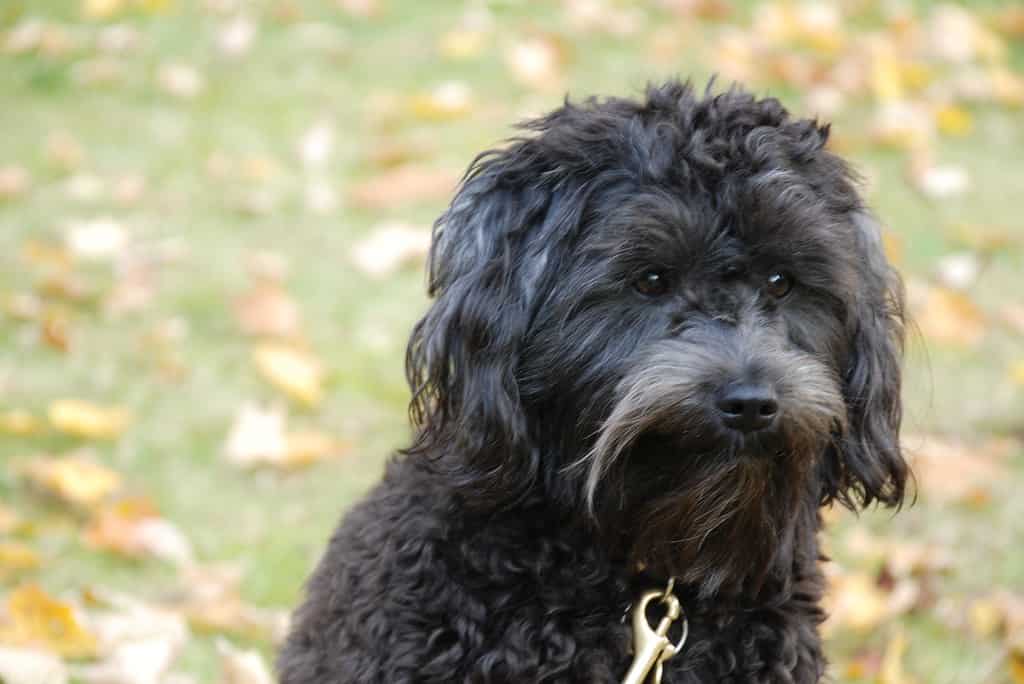
Toy or mini schnoodles might be close to their full adult size at 6 months old but larger varieties still have a lot of growing to do.
©Noah from New York, United States/ CC BY 2.0 – Original
Pictures of Fully Grown Schnoodles
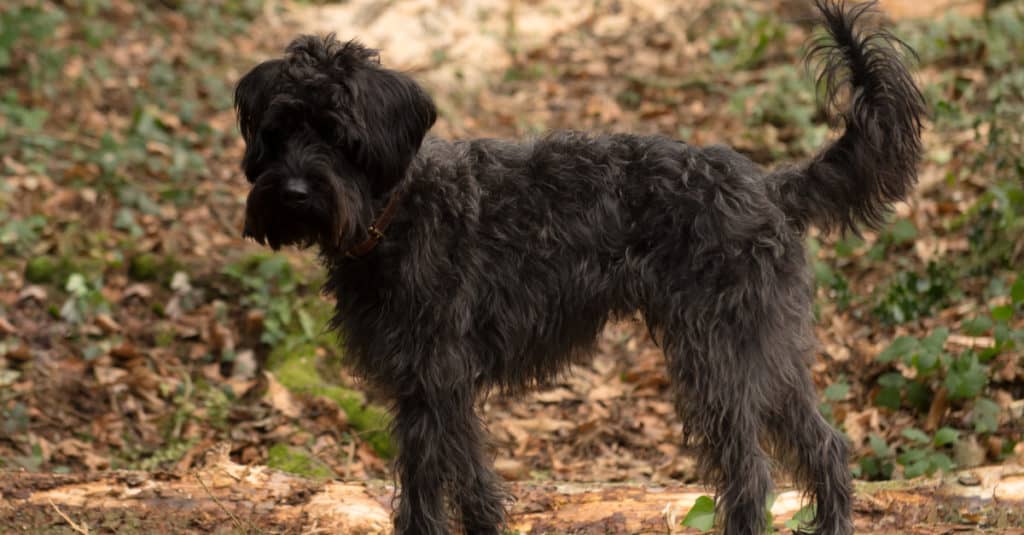
Schnoodles need plenty of exercise since their ancestors, poodles and schnauzers, were both bred as hunting dogs.
©Peter Turner Photography/Shutterstock.com
Other Dog Breeds Similar to Schnoodles
Ready to discover the top 10 cutest dog breeds in the entire world?
How about the fastest dogs, the largest dogs and those that are -- quite frankly -- just the kindest dogs on the planet? Each day, AZ Animals sends out lists just like this to our thousands of email subscribers. And the best part? It's FREE. Join today by entering your email below.
Thank you for reading! Have some feedback for us? Contact the AZ Animals editorial team.

